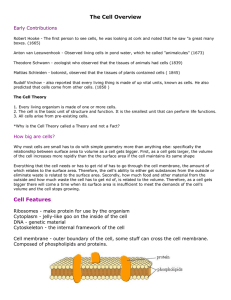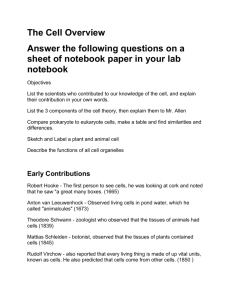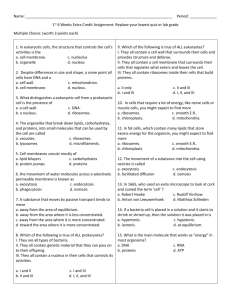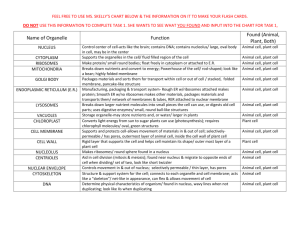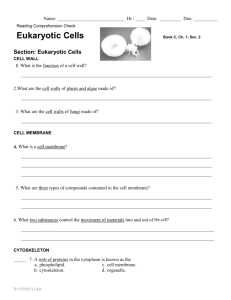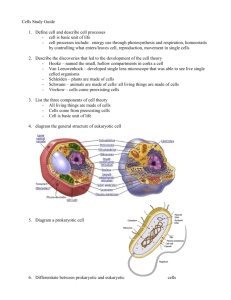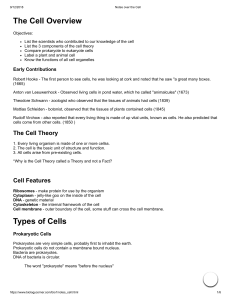The Cell Overview
advertisement
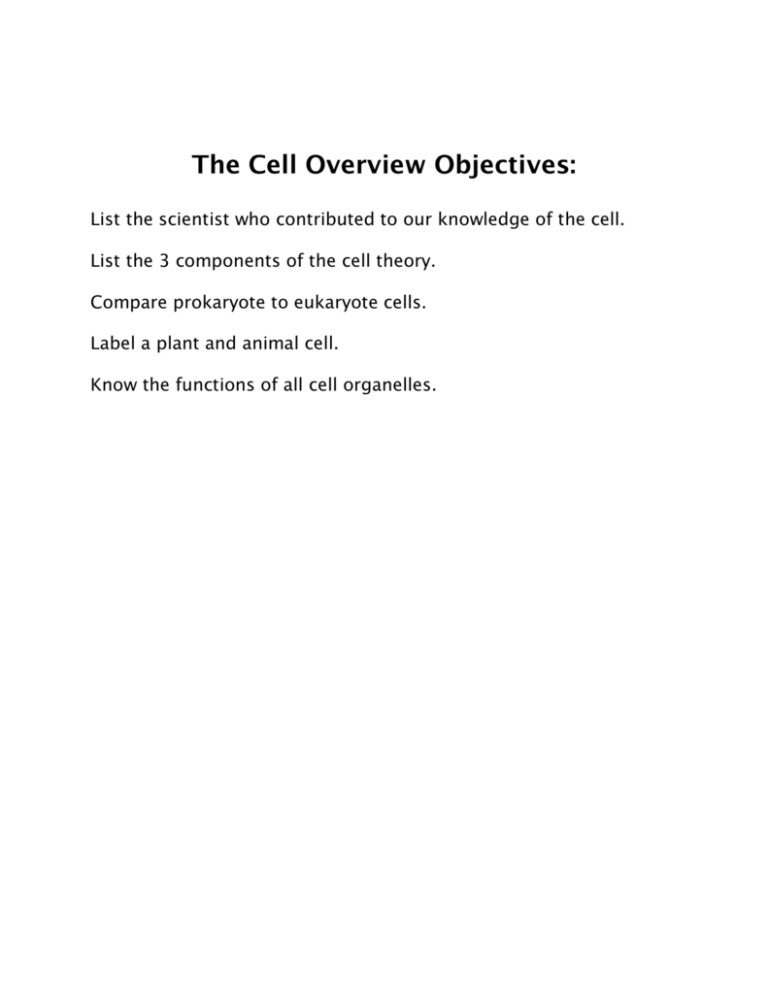
The Cell Overview Objectives: List the scientist who contributed to our knowledge of the cell. List the 3 components of the cell theory. Compare prokaryote to eukaryote cells. Label a plant and animal cell. Know the functions of all cell organelles. The Cell Overview Early Contributions: 1. Robert Hooke – the first person to see cells, he was looking at cork and noted that he saw “a great many boxes” (1665) The Cell Theory: 1. Every living organism is made of one or more cells 2. The cell is the basic unit of structure and function. It is the smallest unit that can perform life functions. 3. All cells arise from pre-existing cells. *Why is the Cell Theory called a Theory and not a Fact? Cell Features: Ribosomes – make protein for use by the organism Cytoplasm – liquid inside the cell DNA – genetic material Cytoskeleton – the internal framework of the cell Cell membrane – outer boundary of the cell, some materials can cross the cell membrane Types of Cells: Prokaryotic Cells Prokaryotes are very simple cells, probably first to inhabit the Earth. They do not contain a membrane bound nucleus. Bacteria are prokaryotes DNA of bacteria is circular The word “prokaryote” means “before the nucleus” Other features found in some bacteria: Flagella – used for movement Pilus – small, hairlike structures used for attaching to other cells Capsule – tough, outer layer that protects bacteria, often associated with harmful bacteria Eukaryotic Cells Eukaryotic cells are more advanced cells. These cells are found in plants, animals, and protists (small unicellular organisms). The Eukaryotic cell is composed of 4 main parts: Cell membrane – outer boundary of the cell Cytoplasm – jelly like fluid interior of cell Nucleus – the “control center” of the cell, contains the cell’s DNA (chromosomes) Organelles – “little organs” that carry out cell functions Cell Part Mitochondria Ribosomes Golgi Apparatus Lysosome Endoplasmic Reticulum (ER) Smooth ER – no ribosomes Rough ER ribosomes Function Energy center or “powerhouse” of the cell. Turns food into useable energy (ATP). Make protein Processes, packages and secretes proteins. Like a factory. Contains digestive enzymes, breaks things down. (Animal) Transport “intracellular highway”. Ribosomes are positioned along the rough ER, protein made by the ribosomes enter the ER for transport. Nucleolus Located inside the nucleus, makes ribosomes. Vacuole Stores water or other substances, plant cells contain a large central vacuole. Chloroplast Uses sunlight to create food, photosynthesis (only found in plant cells) Provides additional support (plant and bacteria cells) Cell Wall Microtubules Part of the cytoskeleton, function in support Also make up cilia and flagella (cell movement) Protein Production: Ribosomes make protein and send them through the ER to the Golgi Apparatus, the GA then processes the proteins and exports the proteins to where in the cell they are needed. Animal Cell Plant Cell The Cell Membrane Function: to regulate what comes into the cell and what goes out Composed of a double layer of phospholipids and proteins The Cell Overview Vocabulary 1. Cells – basic unit of life 2. Chromatin – DNA bound to protein 3. Chromosomes – chromatin condensed
